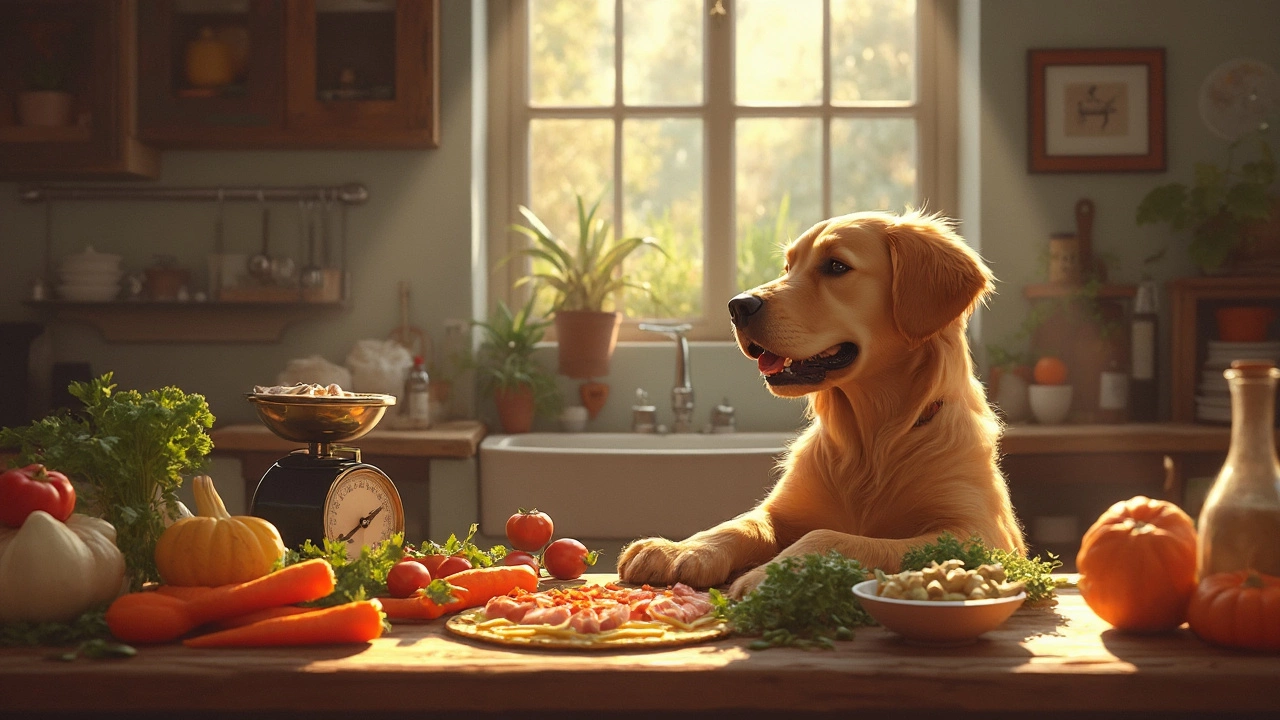Homemade Dog Meals: Easy Recipes and Nutrition Basics
Thinking about swapping store‑bought kibble for a bowl you made yourself? You’re not alone. Many dog owners want to know what’s really in their pet’s plate and how to give them food that’s fresh, tasty, and balanced. Below you’ll find the most common pitfalls, a few go‑to recipes, and tips to keep the nutrition dialed in.
What You Can Safely Cook for Your Dog
Dogs are omnivores, so they can handle a mix of protein, carbs, and veggies. The best starters are plain lean meats (chicken, turkey, beef), cooked rice or sweet potato, and low‑oxalate veggies like carrots, green beans, and pumpkin. Avoid anything seasoned with onion, garlic, salt, or artificial sweeteners – those can be toxic. Also skip bones that can splinter and dairy in large amounts, as many pups are lactose intolerant.
Here’s a quick checklist before you fire up the stove:
- Protein: 40‑50% of the meal (cooked, unseasoned)
- Carbs: 30‑40% (rice, oats, potatoes)
- Veggies: 10‑20% (steamed, plain)
- Fat: 5‑10% (a drizzle of olive oil or a spoonful of fish oil)
- Supplements: optional calcium, vitamin E, or glucosamine if vet recommends
Three Fool‑Proof Homemade Recipes
1. Chicken‑Rice‑Pumpkin Bowl
• 1 cup cooked, shredded chicken breast
• ½ cup cooked brown rice
• ¼ cup canned pure pumpkin (no spices)
Mix together, drizzle ½ tsp olive oil, and serve warm. This combo is easy on the stomach and great for dogs with sensitive digestion.
2. Beef & Sweet Potato Mash
• ½ pound ground beef, drained
• 1 medium sweet potato, boiled and mashed
• ¼ cup chopped green beans, steamed
Combine and let cool to room temperature. Sweet potato adds beta‑carotene, while green beans give a crunch and fiber.
3. Turkey & Oatmeal Delight
• 1 cup cooked ground turkey
• ⅓ cup rolled oats, cooked in water
• ¼ cup grated carrot
Stir together, add a splash of low‑sodium broth for extra flavor. Oats are gentle on the gut and keep energy steady.
All three recipes can be stored in the fridge for up to three days or frozen in portion‑size bags for later. Just thaw in the fridge overnight and warm slightly before serving.
While homemade meals are tasty, they can miss essential micronutrients that commercial kibble guarantees. Talk to your vet about adding a multivitamin or specific supplements based on your dog’s age, size, and health concerns.
Finally, keep a food diary. Jot down what you fed, portion size, and any changes in energy or stool. Over time you’ll see what works best for your pup and can tweak recipes accordingly.
Switching to homemade dog meals doesn’t have to be a massive overhaul. Start with one meal a week, watch your dog’s reaction, and gradually increase as you get comfortable. With a few simple ingredients and a solid recipe base, you’ll be giving your dog fresh, nutritious food without the mystery label.
What Can Dogs Eat Every Day Instead of Dog Food?
If you're running short on dog food or just curious about mixing things up, there are many everyday human foods your dog can eat safely. This article explores the potential of homemade meals, highlighting the benefits of whole foods over processed kibble. Learn what nutrients to focus on to ensure your furry friend gets a balanced diet. Uncover tips and tricks to make the transition to human food safe and enjoyable for your pet.
